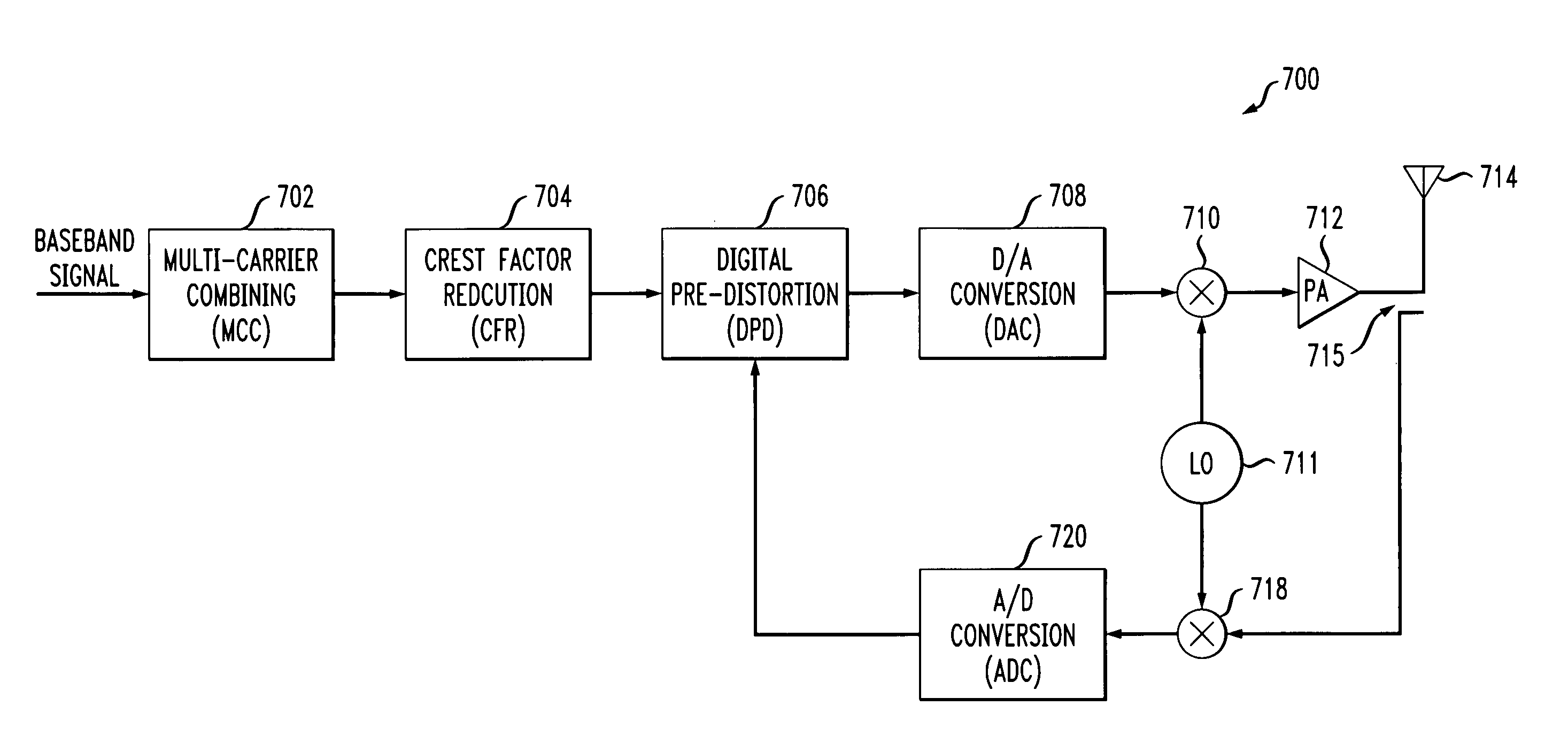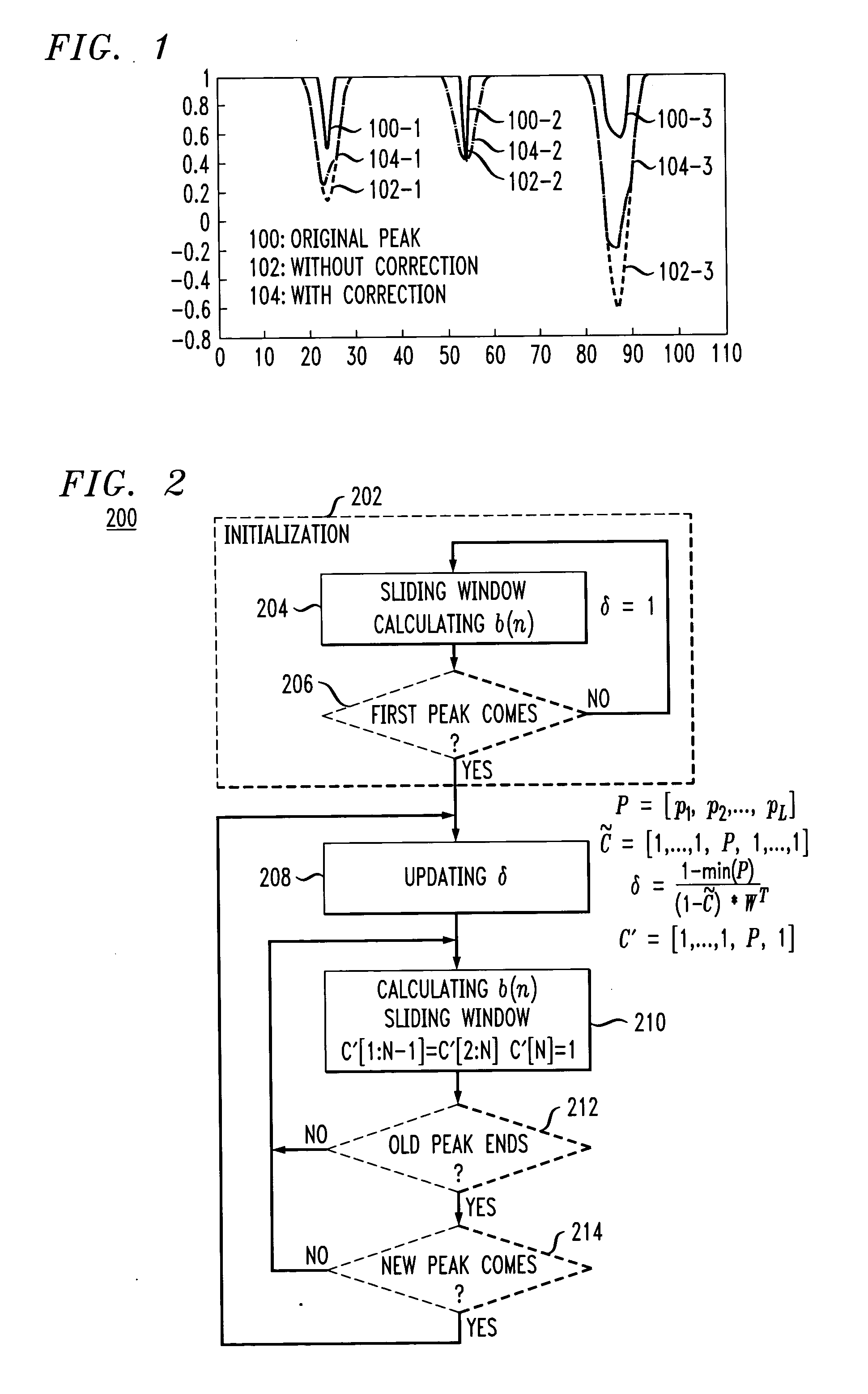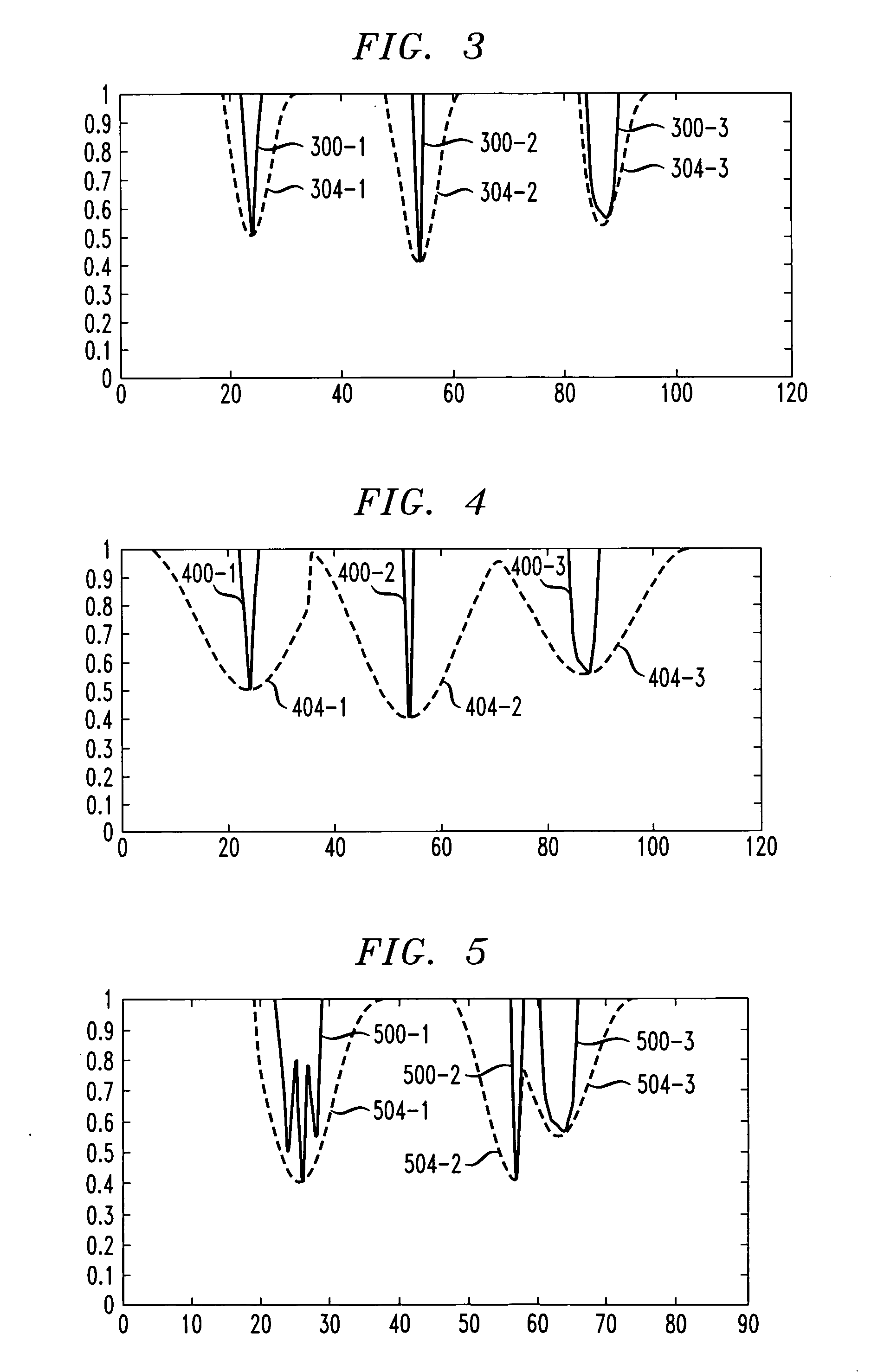Adaptive peak windowing for crest factor reduction in a communication system transmitter
a communication system and crest factor technology, applied in the field of communication systems, can solve the problems of low power efficiency, low spectral efficiency of modulation techniques, and severe in-band and out-of-band distortion of wideband signals, and achieve the effect of reducing interference among different peaks
- Summary
- Abstract
- Description
- Claims
- Application Information
AI Technical Summary
Benefits of technology
Problems solved by technology
Method used
Image
Examples
Embodiment Construction
[0024] The invention will be described herein in conjunction with an illustrative embodiment of a communication system transmitter configured with adaptive peak windowing. It should be understood, however, that the invention is more generally applicable to any communication system transmitter in which it is desirable to provide a reduction in crest factor. For example, the described techniques, although particularly well suited for use in 3G WCDMA or CDMA2000 base station transmitters, can be adapted in a straightforward manner to other types of communication system transmission applications.
[0025] The present invention in the illustrative embodiment provides an improved peak windowing approach referred to herein as “adaptive peak windowing.” More specifically, the illustrative embodiment, by analyzing incoming peak pulse information within a current window, adaptively updates a scaling factor of a windowing function. This advantageously eliminates interference among different peak...
PUM
 Login to View More
Login to View More Abstract
Description
Claims
Application Information
 Login to View More
Login to View More - R&D
- Intellectual Property
- Life Sciences
- Materials
- Tech Scout
- Unparalleled Data Quality
- Higher Quality Content
- 60% Fewer Hallucinations
Browse by: Latest US Patents, China's latest patents, Technical Efficacy Thesaurus, Application Domain, Technology Topic, Popular Technical Reports.
© 2025 PatSnap. All rights reserved.Legal|Privacy policy|Modern Slavery Act Transparency Statement|Sitemap|About US| Contact US: help@patsnap.com



